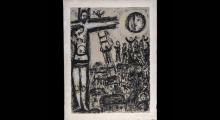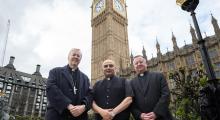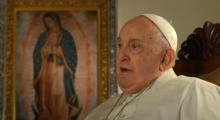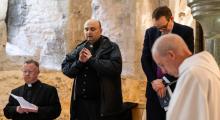Issued by the Catholic Center for Studies and Media - Jordan. Editor-in-chief Fr. Rif'at Bader - موقع أبونا abouna.org
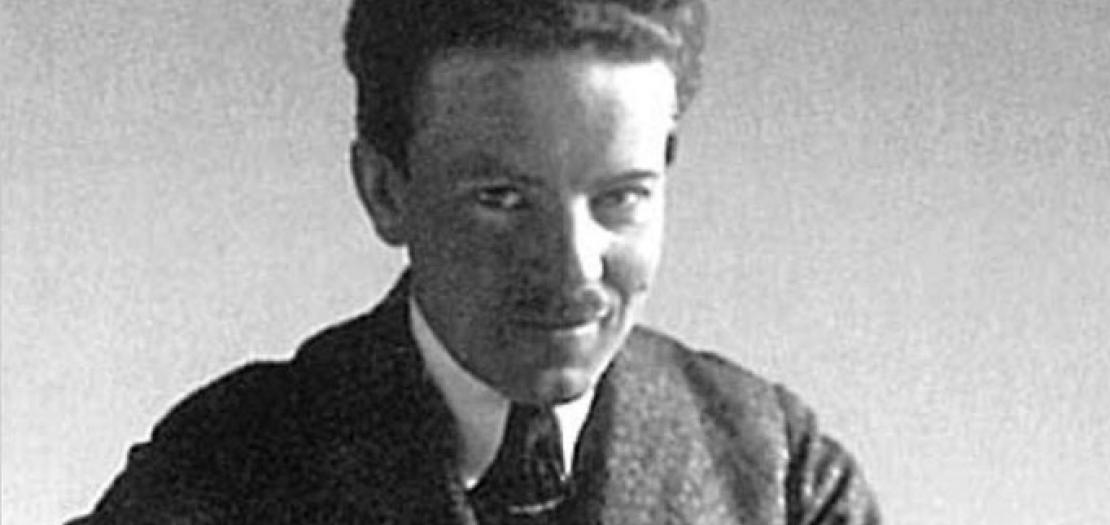
In January, Pope Francis signed eight decrees. Seven of them recognized the heroic virtue of “Servants of God.” Among the new “Venerables” of 2017 is Jan Tyranowski (1901-1947), a Polish mystic inspired by Carmelite spirituality who played an enormous role in Pope St. John Paul II’s discovery of his vocation.
One verified miracle attributed to Tyranowski’s intercession is needed for his beatification, and another is needed for his canonization. Tyranowski shows how the lay faithful have an enormous role in the formation of priestly vocations.
Jan Tyranowski was born in Krakow, Poland, in 1901. He initially worked as a bookkeeper, but was dissatisfied with this profession and began to work as a tailor for his father’s business. In 1935, Tyranowski had a profound conversion at the Salesian St. Stanislaus Kostka parish in Krakow’s Debniki neighborhood. During a Sunday sermon, a priest said: “It is not difficult to be a saint.”
Before the Second Vatican Council, some Catholics incorrectly believed that holiness was primarily the domain of priests and nuns. Among those who held this erroneous view was Tyranowski. However, after hearing that homily, he decided to devote himself to God and pursue sainthood.
He took a vow of chastity and made a rigorous daily schedule for his spiritual life. He prayed and meditated for up to four hours a day and examined his conscience twice daily. Although he only had an eighth-grade education, Tyranowski immersed himself in the writings of the Carmelite Church doctors, Sts. John of the Cross and Teresa of Avila.
The future pope met Jan Tyranowski at St. Stanislaus Kostka parish in 1940. The young Karol Wojtyła, recently orphaned after his father’s passing, was living in a house on 10 Tyniecka St. (which now houses a museum), a five-minute walk from the church. During the German occupation of Krakow, he worked at a limestone quarry to avoid being deported to Germany as a slave laborer, and at night, he secretly acted in the Rhapsodic Theater, which sought to preserve Polish culture — banned by the Nazis — by illegally performing the classic works of Polish drama. Tyranowski came to play a crucial role in the young Wojtyla’s life only a year later.
The Nazis sought to eliminate Polish culture and the Polish Church; as part of this campaign, most of the Salesian fathers at the Debniki parish were deported to the Dachau concentration camp in May 1941. One of the few remaining priests asked Tyranowski to direct the parish’s youth ministry.
As part of this ministry, Tyranowski prepared paper circles with flowers painted on them, along with the names of virtues, such as modesty, obedience and chastity. Each young man drew one circle and had to practice each virtue for a month, giving Tyranowski a detailed report afterward. He also established 15-member, all-male “Living Rosary” groups that would pray the mysteries of the Rosary. One of the group leaders was Karol Wojtyła. Meanwhile, Tyranowski introduced Wojtyla to works by St. John of the Cross. St. John’s mystical poetry appealed to the young poet and actor.
Wojtyła’s reading of St. John taught him that the cross is the manifestation of God’s love for man and that being a Christian involves following God’s will. It was thanks to Tyranowski that Karol Wojtyła first began to consider a vocation to the priesthood.
The tailor and mystic also reinforced Wojtyła’s profound Marian piety.
The whole world saw Wojtyła’s love for Our Lady during his 26-year pontificate; it was St. John Paul II who added the Luminous Mysteries to the Rosary and who credited Mary with saving his life after a miraculous recovery from an assassination attempt.
However, as a young man, Karol Wojtyła began to doubt devotion to Mary, fearing that it distracts from one’s relationship with Christ. Tyranowski ended these doubts by introducing him to the work of French theologian St. Louis de Montfort, who argued that Marian devotion actually strengthens faith in God, as it leads one to the truth about the Incarnation and the Trinity.
In addition, Karol Wojtyła’s introduction to Carmelite spirituality by Tyranowski was so profound that when Wojtyła was in his fourth year of theology in seminary, he asked Cardinal Adam Sapieha for permission to leave the diocesan seminary and transfer to a Carmelite monastery in nearby Czerna. The cardinal refused, telling Wojtyła to “finish what he started.” It is likely that the scarcity of diocesan priests in Poland as a result of Nazi persecution played a role in Cardinal Sapieha’s decision; during the German occupation of Poland, up to a quarter of Polish priests were killed in Dachau, Auschwitz and other Nazi killing centers.
The late Father Mieczysław Malinski, a friend of Karol Wojtyła’s from their Debniki days, told papal biographer Jonathan Kwitny the following about Tyranowski: “I can safely say that if it wasn’t for him, neither Wojtyła nor I would have become priests.”
St. John Paul II himself writes in Gift and Mystery: “Jan Tyranowski … also concerned himself with the spiritual formation of the young people whom he met. Thus I learned the basic methods of self-formation, which would later be confirmed and developed in the seminary program.”
Tyranowski’s Living Rosary circle produced a total of five diocesan priestly vocations, including Malinski and Wojtyła, and six for religious orders.
The witness of Jan Tyranowski proves that the lay faithful — who make up the vast majority of the world’s Catholics — are called to holiness no less than priests and nuns. What’s more, their fidelity to Christ can have an enormous impact on the Church.
If not for Tyranowski, St. John Paul II may not have discovered his vocation to the priesthood, which has had a lasting legacy in the universal Church and world.



